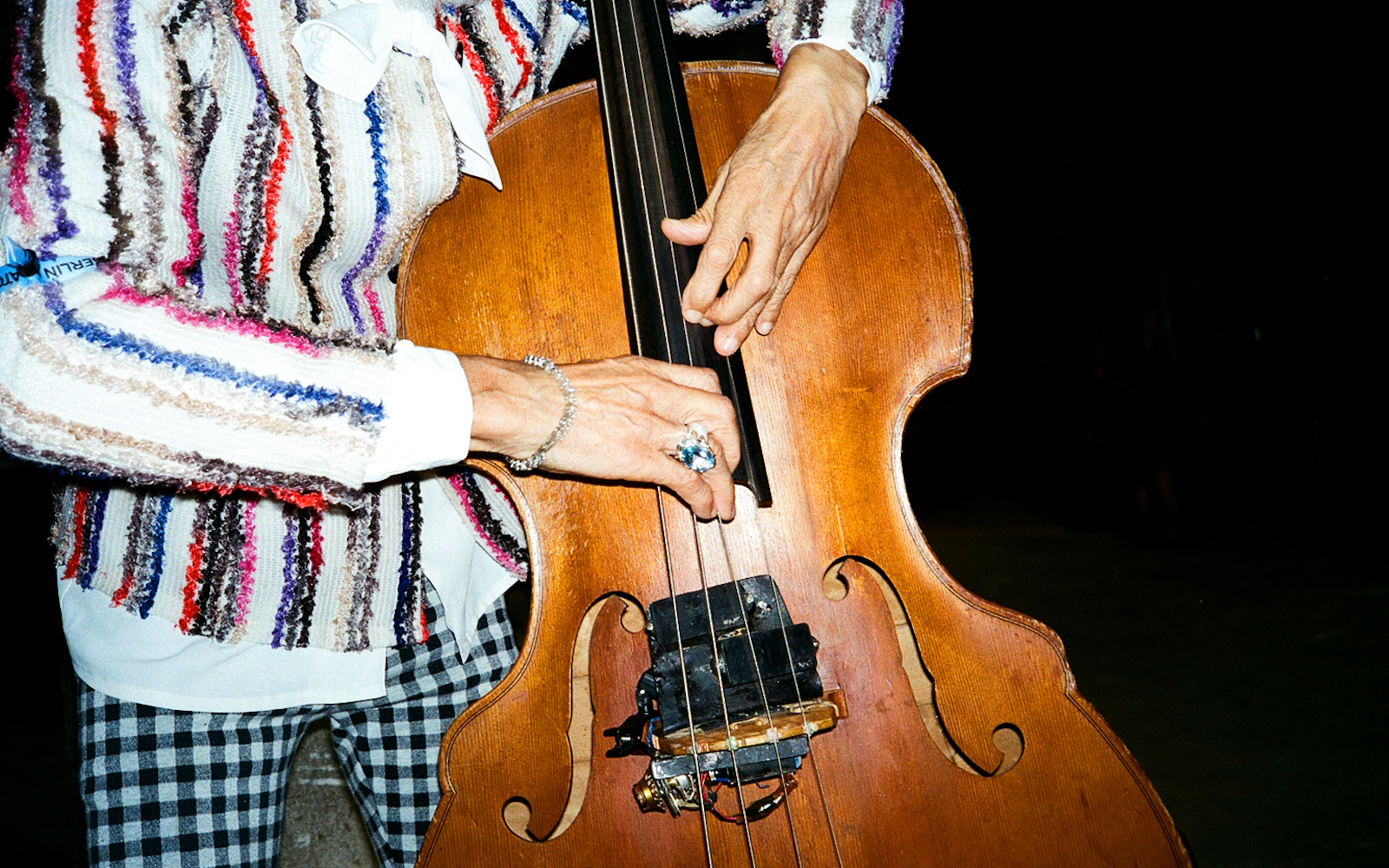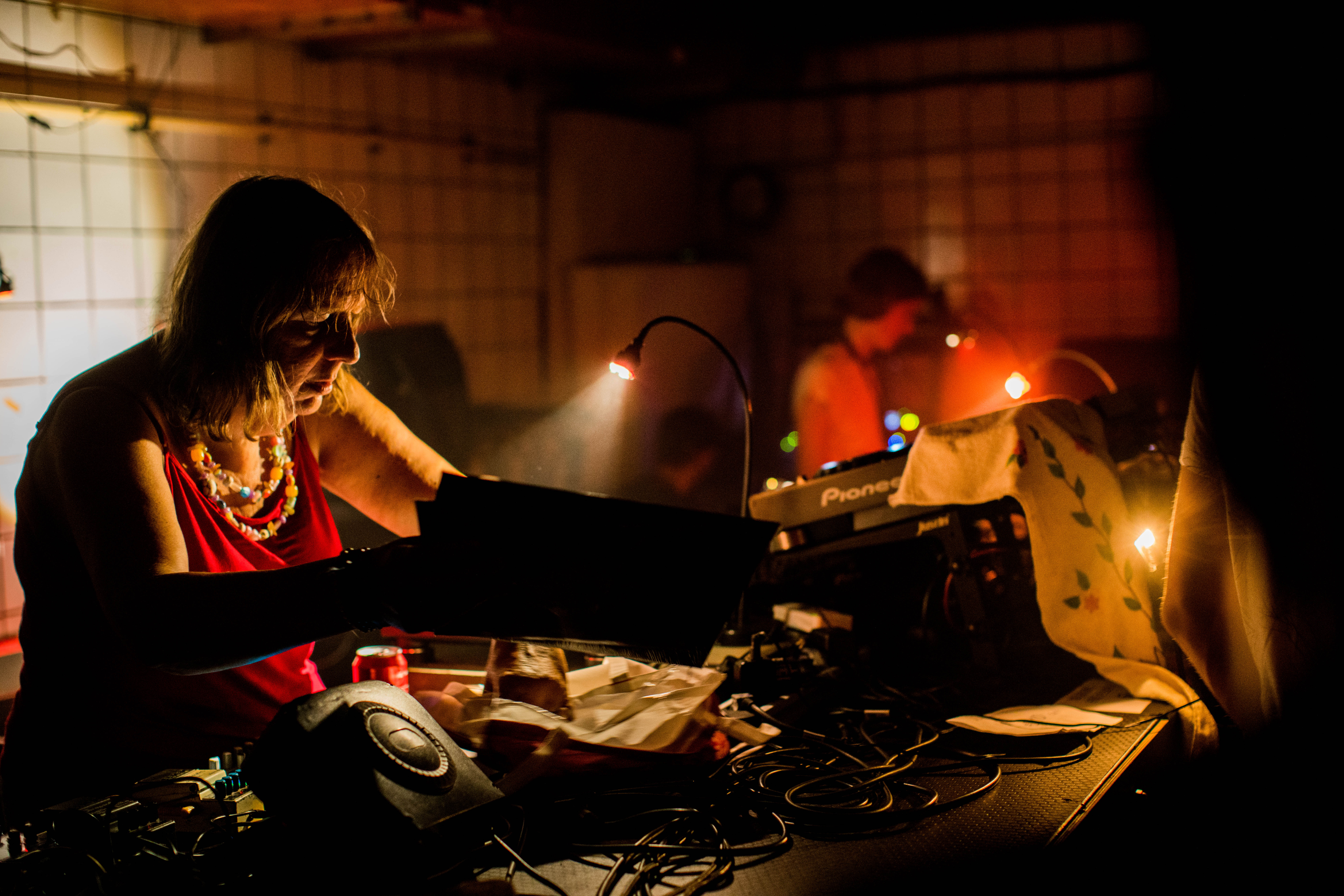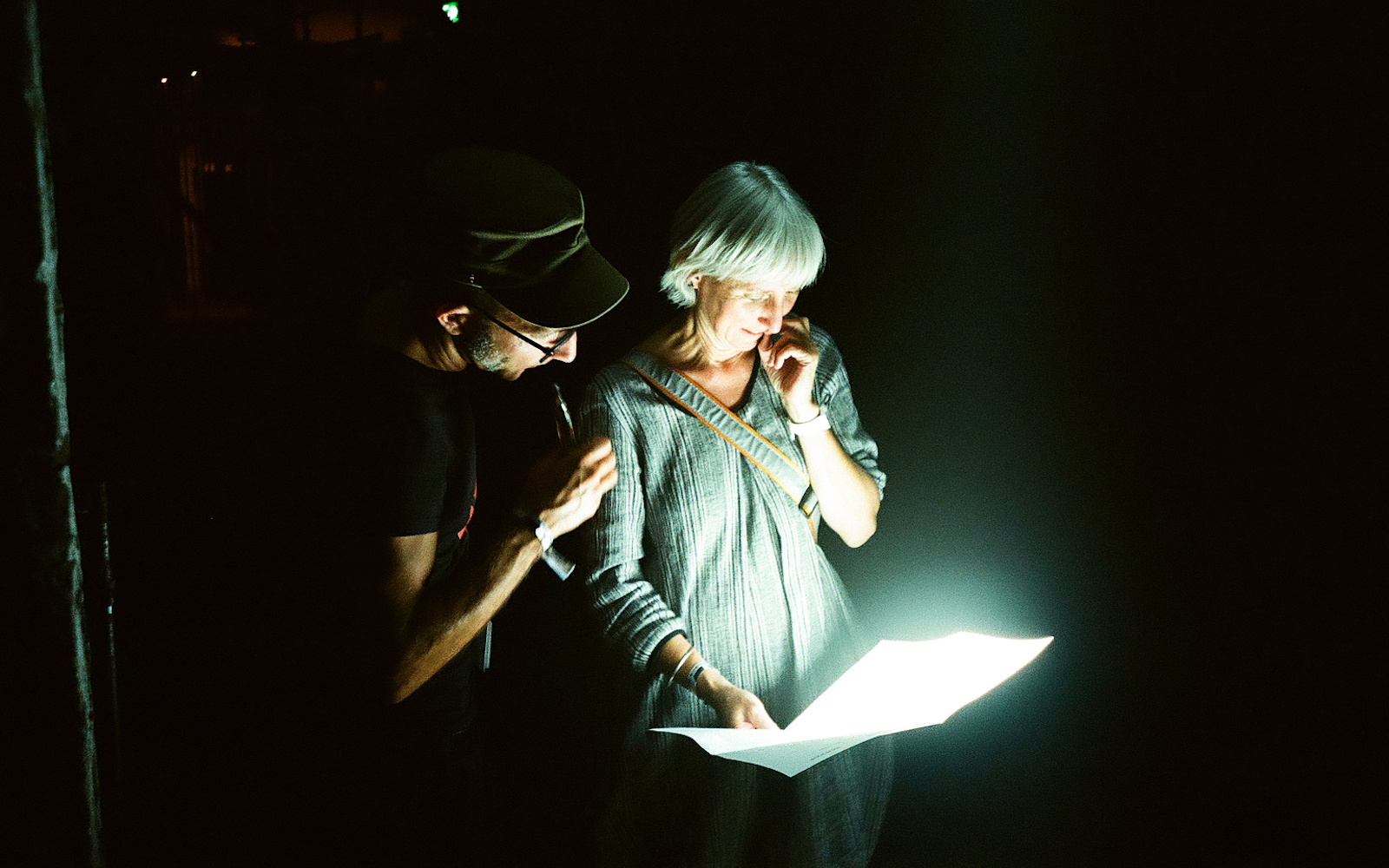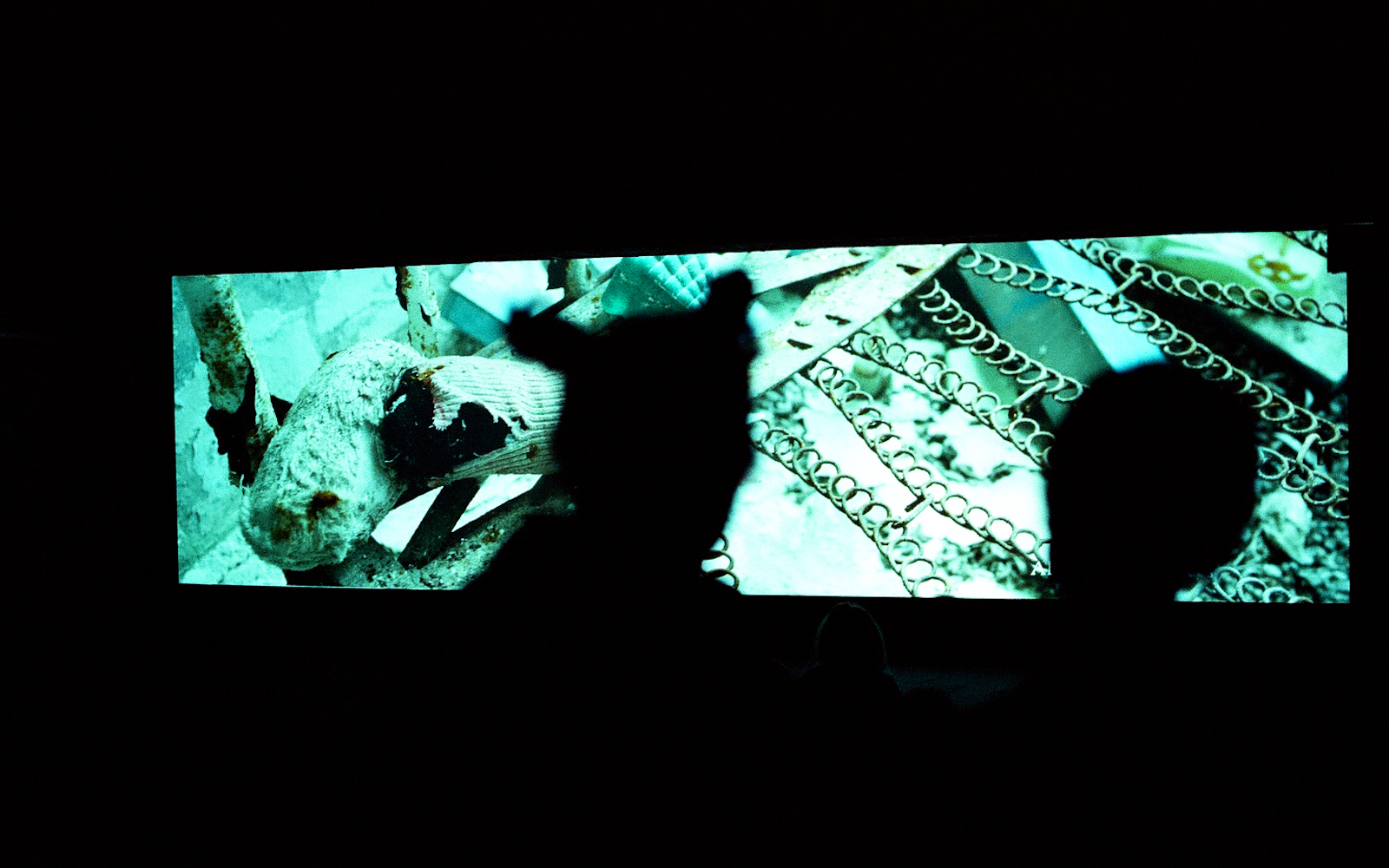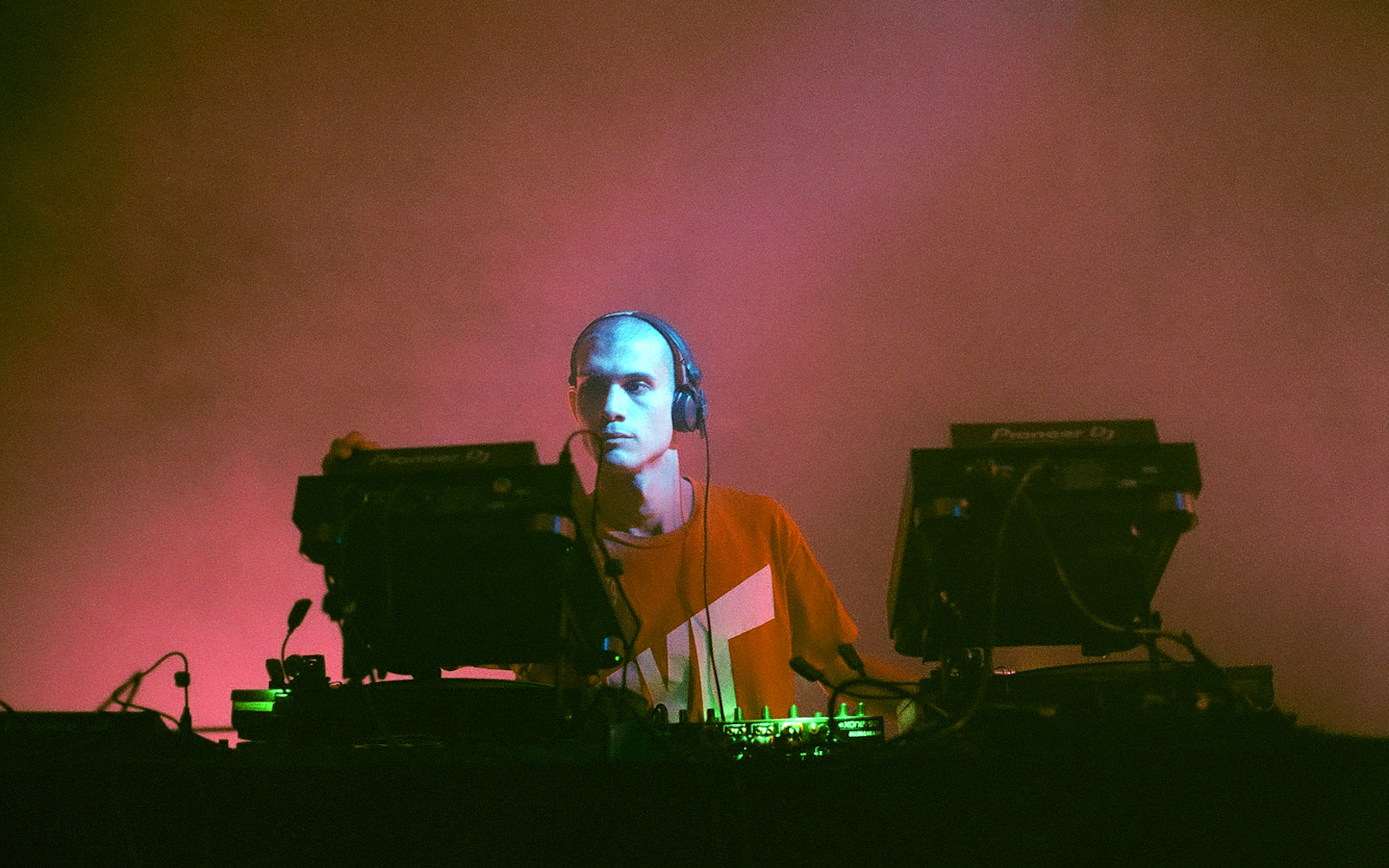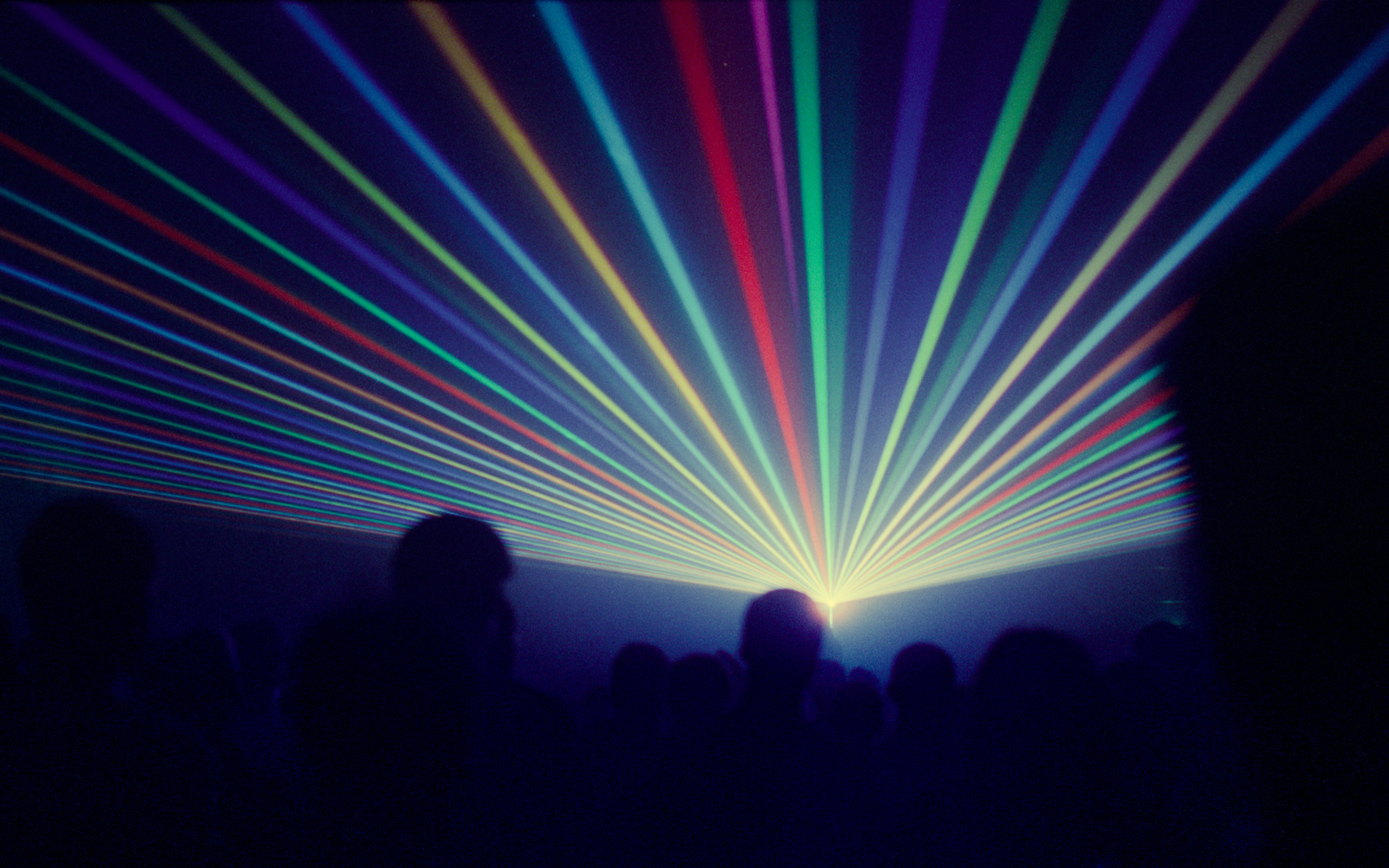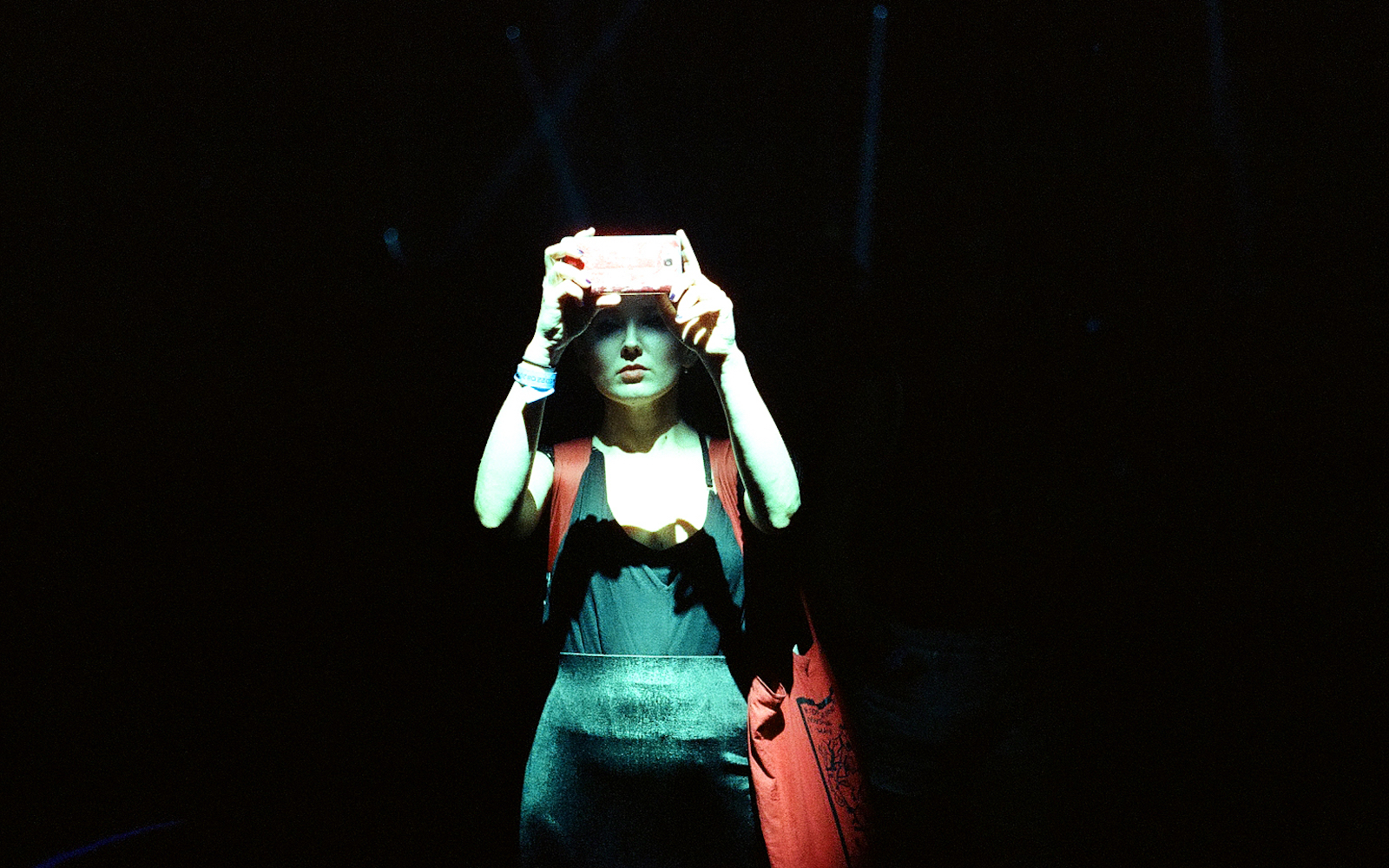Photo credit /
Cornelia Thonhauser - Prequel Tapes with nomoreless & Valentin Tszin, Astrid Sonne, Actress, Machine Woman, DJ Marcelle
Helge Mundt - Lucrecia Dalt, Robin Fox,
Frankie Casillo - Hiro Kone, Cello, White Hair, Green Visuals, Objekt, Plant
Berlin Atonal 2018: Five key performances
- PublishedAug 30, 2018
- Words
- Five of the best from Berlin's leading techno and experimental festival.
- Share
- Before getting on the train to attend this year's Atonal, I sat in my bed watching a video from the festival's first edition. It's 1982 at the event's original location, the punk club S036, west of the Wall. Onstage are industrial group Einstürzende Neubauten, famous at the time for creating blistering sounds with found material. Towards the end of the song "Durstiges Tier," the camera pans to the back corner of the stage, where a band member can be seen steadily pushing a cement drill into the venue's wall. Experimental music at this time didn't just mean challenging sounds—it meant complete anarchy. Before we gush over or critique what Atonal is today, it's important to keep in mind what it was when it started.
Kraftwerk, the massive ex-power station that hosts Atonal these days, was immaculately clean. There were no broken bottles on the floor and staff members hurried to ensure the branded plastic cups handed out at the bar didn't pile up. This year's lineup was less of a bro-fest, continuing the gradual improvement made after the festival was critiqued for its lack of female identifying performers. (The study, published by female:pressure in 2017, showed that Atonal featured only 3 and 4.3 per cent female identifying artists on its lineups in 2014 and 2015 respectively.)
But even as things diversified on paper, many of the Main Stage shows still sounded xeroxed. I'm not sure what inspires such homogeny, but it seems like every year people go out of their way to feed the narrative of what an Atonal participant should sound like. On the surface, this comes out in obvious ways—everybody wearing black, for example. Black leather. Black collars. Black jeans. Black Nikes. The biggest fashion change I noticed from last year was people trading in their graphic long-sleeves for reflective Amnesia Scanner shirts. This also comes out in the music, with many artists abandoning their regular practices for experimental or industrial-lite performances. Maybe they'll sprinkle their sets with some Gregorian chants, or add in a spooky sweep with low-frequency oscillation, or jam on a pedal-effected electric guitar. These are tried-and-tested tropes that don't bring anything new to the table. I'm not saying artists need to be wielding drills, but I long for an edition of Atonal that will probe the unknown, where I'll walk away from more performances saying to myself: "That was mental!"
That said, Atonal's curation is growing more interesting with time. 2018's programme featured some of the foremost names in the techno and experimental scenes. Down in OHM and Tresor, there was plenty of cheekier, more exploratory music to be found, while upstairs in Kraftwerk, the space was often used creatively in performances as an acoustic tool. The hope is that, as the lineup continues to evolve, the festival will leave its comfort zone behind and welcome in a new era of discovery.
Here are five key performances from Atonal 2018.
Astrid Sonne The lucid wails of Astrid Sonne's viola could be heard ringing through Kraftwerk from far below. Looking towards Main Stage, I could see only fog swirling in large torrents and captured by hot pink light. The fevered viola playing eventually gave way to an arpeggiator overload of hard-hitting electronics. Rhythms clashed and an erratic bout of noisy techno ensued. The shining beacon of Sonne's show came towards the end, when she was joined onstage by three other artists for a choral acappella performance. Effortlessly drifting through four-part harmonies and lyrics like "Moments of excitement looking at the ceiling," they swept through the darkness like one multi-octave alien voice slowly dissolving into the cloud.
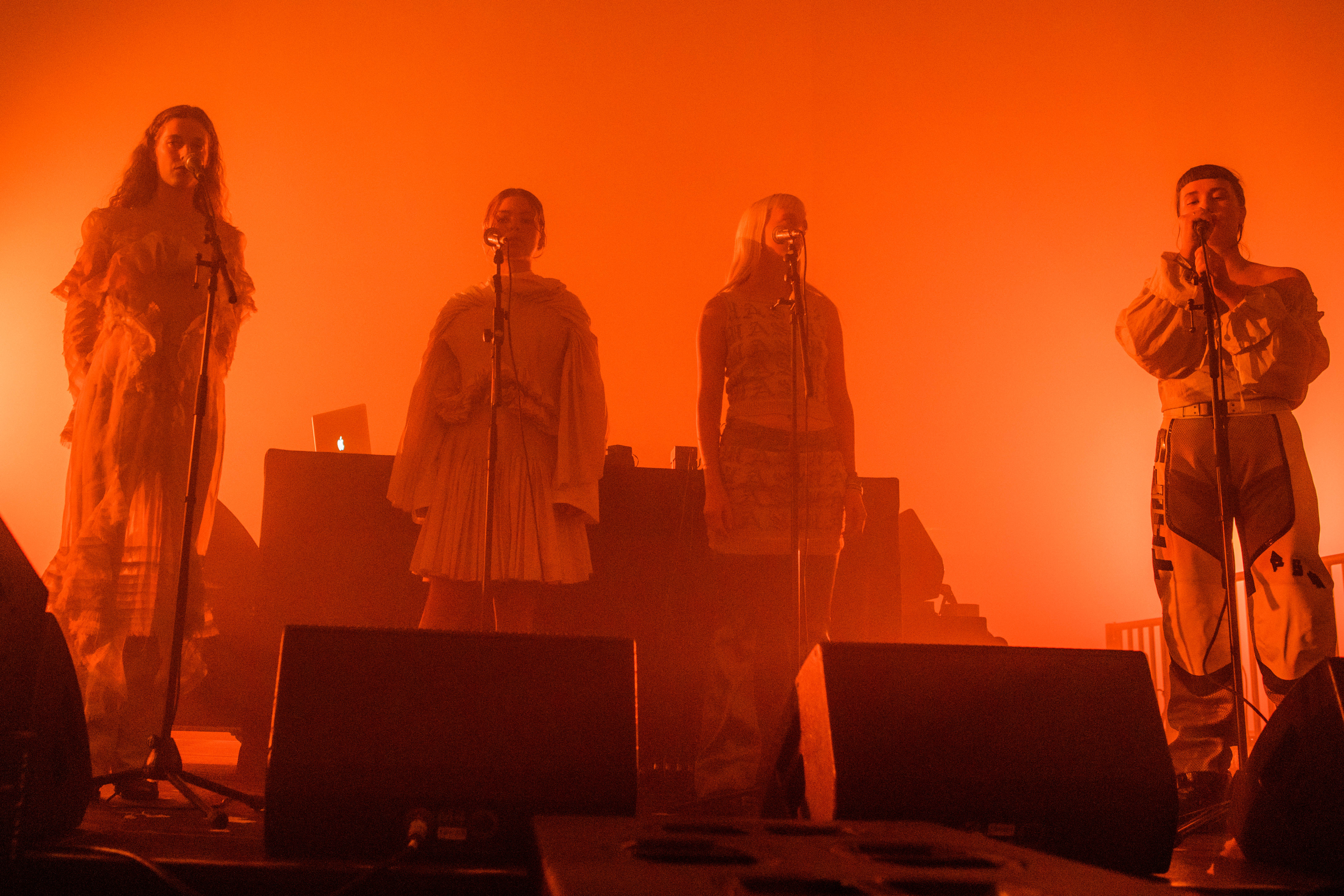 Lucrecia Dalt Using patches programmed for her recent album, Anticlines, the Colombian artist Lucrecia Dalt transformed that record's essential sounds into one drawn-out medley. The title of the piece, Synclines, refers to a geological formation where new rocks sit in the center and older rocks on the outside. While she performed some tracks whole, like "Tar," she spent most of the time warping the familiar, presenting a completely fresh take on recognisable sounds. The end result was a long composition featuring industrial tones and an occasional dub influence. It was exciting to see an artist whip their own creation into a new form, like a math equation with two solutions.
Lucrecia Dalt Using patches programmed for her recent album, Anticlines, the Colombian artist Lucrecia Dalt transformed that record's essential sounds into one drawn-out medley. The title of the piece, Synclines, refers to a geological formation where new rocks sit in the center and older rocks on the outside. While she performed some tracks whole, like "Tar," she spent most of the time warping the familiar, presenting a completely fresh take on recognisable sounds. The end result was a long composition featuring industrial tones and an occasional dub influence. It was exciting to see an artist whip their own creation into a new form, like a math equation with two solutions.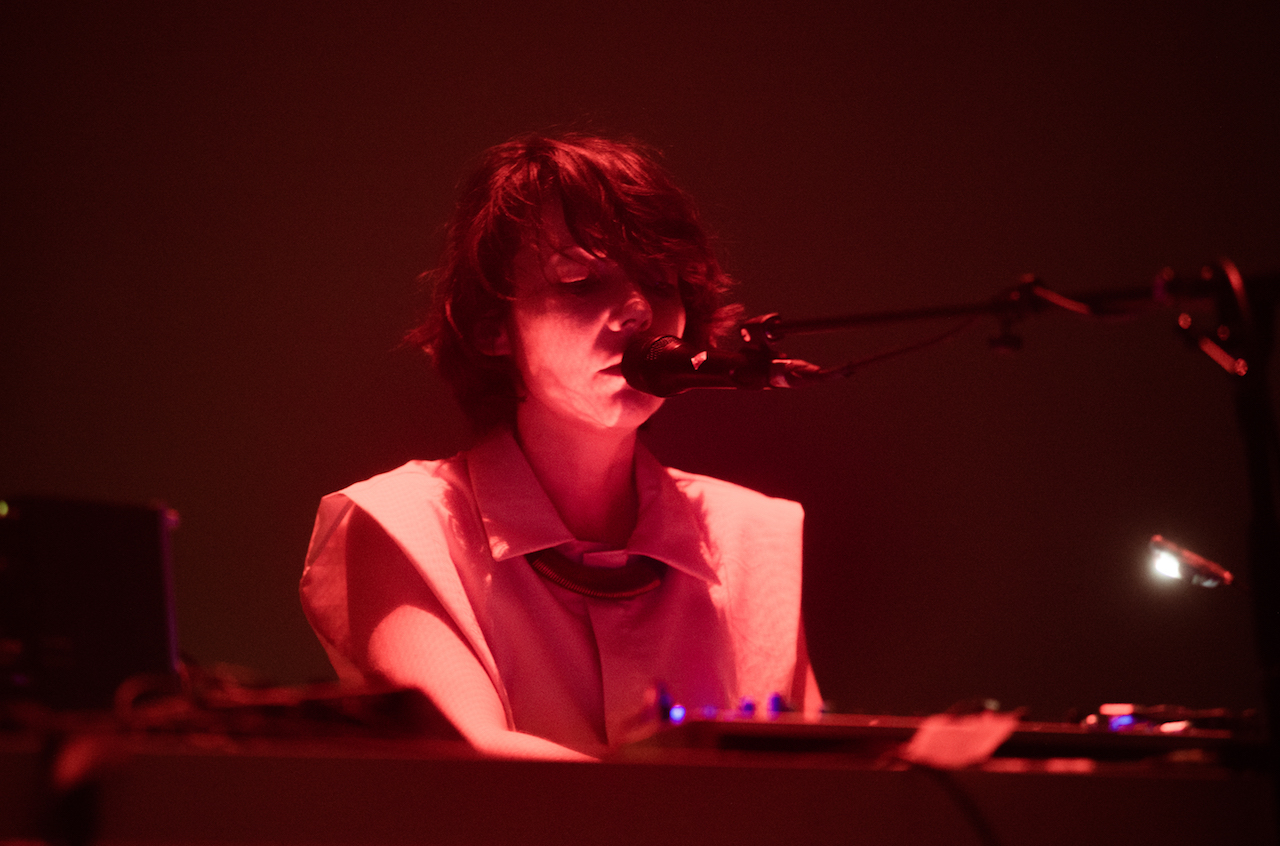 Hiro Kone Performing the day her new album, Pure Expenditure, was released, Hiro Kone played the record in full for the first time. Standing behind a man with a shirt boasting "The World's Largest Synth Collection," I strapped myself in for her Main Stage show. The New York-based artist uses electronic music as a form of expressing her cultural critiques and observations, and Pure Expenditure is rooted in her concerns about capitalism and the evils of a consumption-based society. While you won't find obvious nods to that theme in her compositions, the message comes across in the music's sense of purpose. Since the album was shorter than her allocated slot, she played a modified version. It had its darker moments, from pulsating industrial rhythms to quiet bouts of ambience, but overall her set felt much more optimistic than the record. At points, it was even danceable. But as with many of the Main Stage shows, the audience viewed the performance as if it were an exhibition—movement was kept to a minimum.
Hiro Kone Performing the day her new album, Pure Expenditure, was released, Hiro Kone played the record in full for the first time. Standing behind a man with a shirt boasting "The World's Largest Synth Collection," I strapped myself in for her Main Stage show. The New York-based artist uses electronic music as a form of expressing her cultural critiques and observations, and Pure Expenditure is rooted in her concerns about capitalism and the evils of a consumption-based society. While you won't find obvious nods to that theme in her compositions, the message comes across in the music's sense of purpose. Since the album was shorter than her allocated slot, she played a modified version. It had its darker moments, from pulsating industrial rhythms to quiet bouts of ambience, but overall her set felt much more optimistic than the record. At points, it was even danceable. But as with many of the Main Stage shows, the audience viewed the performance as if it were an exhibition—movement was kept to a minimum.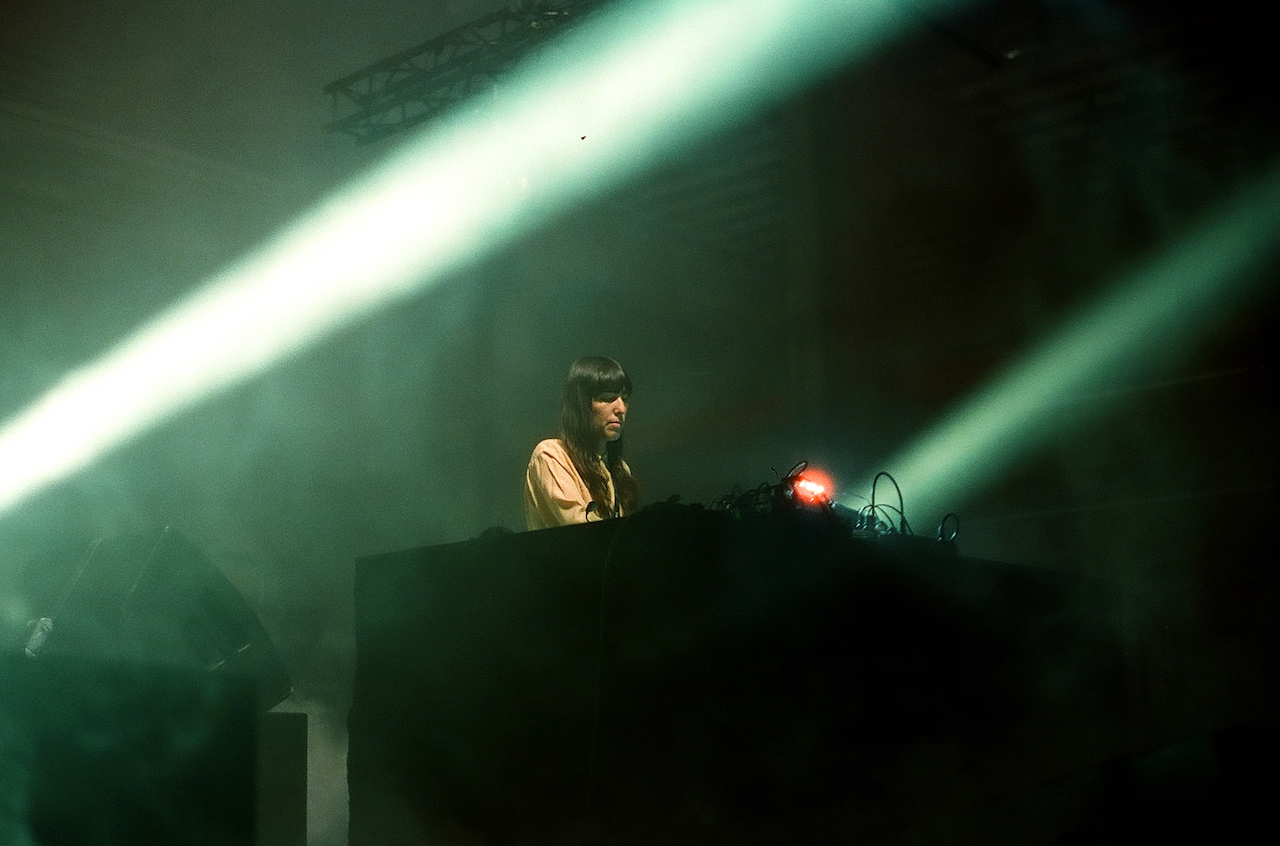 Actress Things were running a little behind for Actress. Members of Saturday night's Main Stage crew could be seen carefully arranging a chrome mannequin behind a Korg Kronos keyboard and positioning a microphone in front of its sealed mouth. When the lights dimmed, Actress emerged dressed all in black, with a black backpack and a black surgical mask, which he would wear for the duration of the show. The visual aspect took its lead from the cover of 2017's AZD—chrome was the material of the hour. Actress has always been known for the darkness of his music, and noise and dissonance have played a consistent role in his practice, balanced and revitalized by a subtle sense of rhythm. But I felt like, for this performance, that delicate balance of abstraction and beauty was thrown out the window, rendering the whole thing directionless. The music sounded like something that had been played millions of times before. I wasn't hearing anything new. No boundary was so much as tickled. As we all dispersed, one concertgoer said to another: "He's got so many catchy melodies in his head but he just refuses to play them."
Actress Things were running a little behind for Actress. Members of Saturday night's Main Stage crew could be seen carefully arranging a chrome mannequin behind a Korg Kronos keyboard and positioning a microphone in front of its sealed mouth. When the lights dimmed, Actress emerged dressed all in black, with a black backpack and a black surgical mask, which he would wear for the duration of the show. The visual aspect took its lead from the cover of 2017's AZD—chrome was the material of the hour. Actress has always been known for the darkness of his music, and noise and dissonance have played a consistent role in his practice, balanced and revitalized by a subtle sense of rhythm. But I felt like, for this performance, that delicate balance of abstraction and beauty was thrown out the window, rendering the whole thing directionless. The music sounded like something that had been played millions of times before. I wasn't hearing anything new. No boundary was so much as tickled. As we all dispersed, one concertgoer said to another: "He's got so many catchy melodies in his head but he just refuses to play them."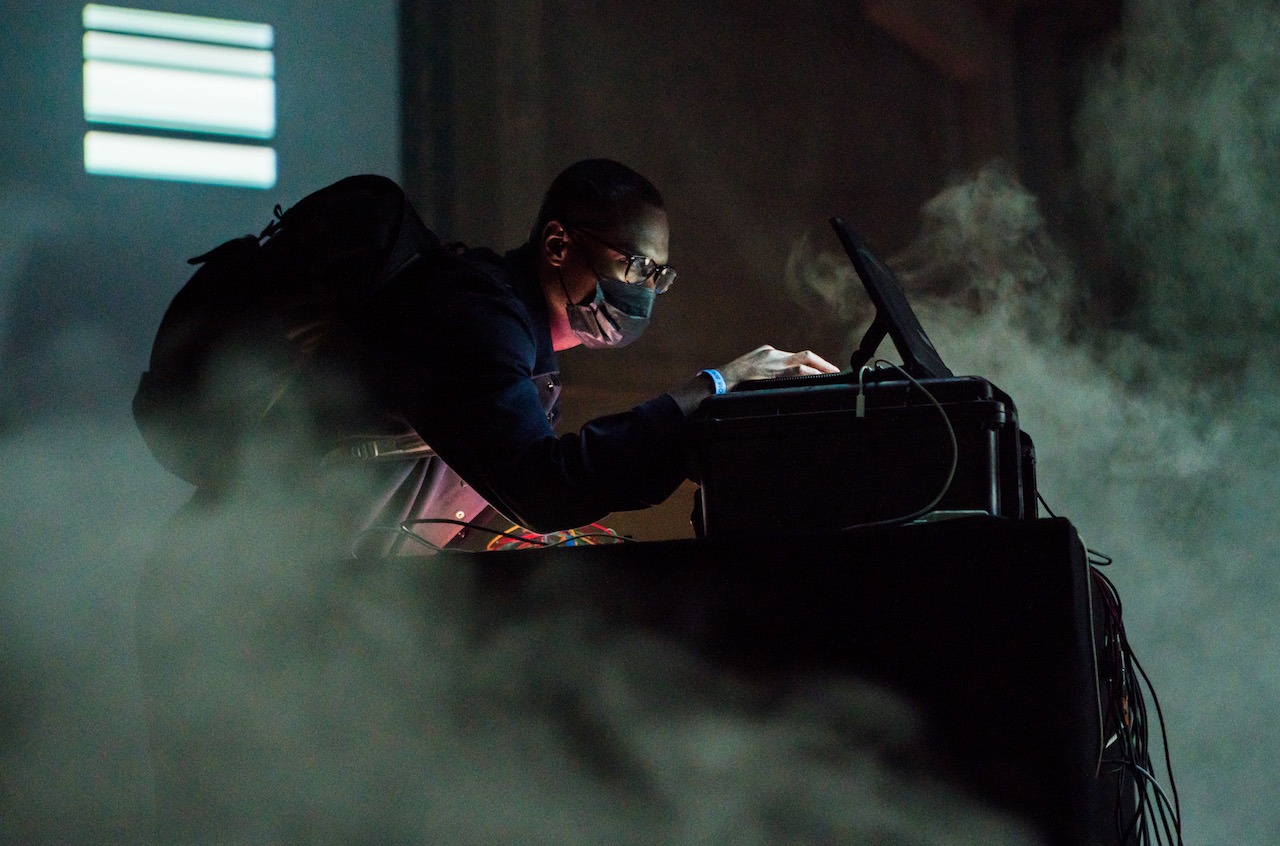 Machine Woman Fresh from a performance at MUTEK in Montreal, Machine Woman hit the booth at OHM just two hours after her plane landed, playing to an audience stuffed tightly together like sweaty sardines in a tin can. Standing to the right of the CDJs, where artists normally play, she smoked nonchalantly while whipping the room into full rave mode, armed with just a small mixing desk and a computer running Ableton. After a long day in the drone zone, people were ready to dance, cheering her on and using the little space available to bust a move. If she was suffering jet-lag, you wouldn't have known it. The set began with a headlong energy that never let up, as bright tech house with acid bass drifted in an industrial direction. The tempo was hyper. The big question of the night revolved around one song—would she play it? Then the first distorted kick drums of "Camile From OHM Makes Me Feel Loved" rolled in and for one brief moment the world was all as it should be.
Machine Woman Fresh from a performance at MUTEK in Montreal, Machine Woman hit the booth at OHM just two hours after her plane landed, playing to an audience stuffed tightly together like sweaty sardines in a tin can. Standing to the right of the CDJs, where artists normally play, she smoked nonchalantly while whipping the room into full rave mode, armed with just a small mixing desk and a computer running Ableton. After a long day in the drone zone, people were ready to dance, cheering her on and using the little space available to bust a move. If she was suffering jet-lag, you wouldn't have known it. The set began with a headlong energy that never let up, as bright tech house with acid bass drifted in an industrial direction. The tempo was hyper. The big question of the night revolved around one song—would she play it? Then the first distorted kick drums of "Camile From OHM Makes Me Feel Loved" rolled in and for one brief moment the world was all as it should be.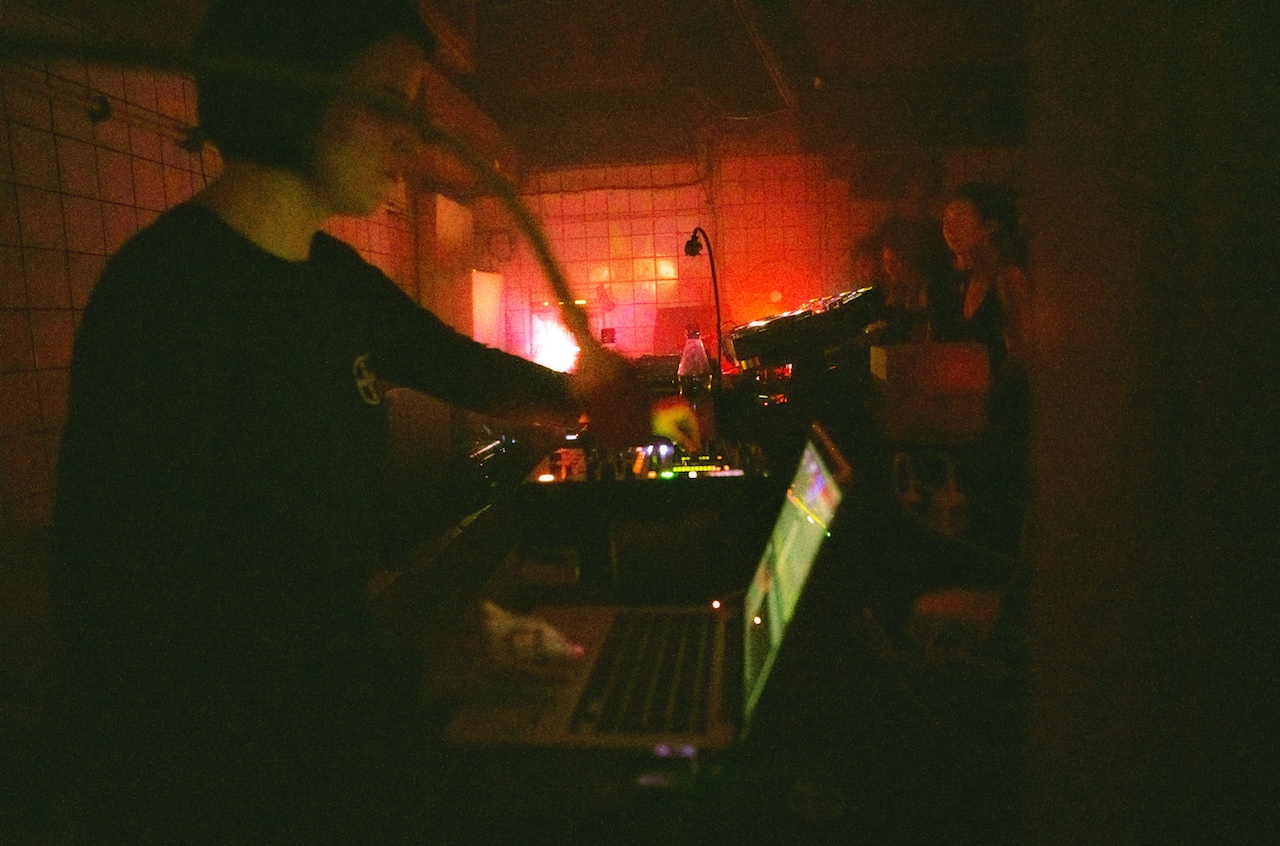 0303
0303